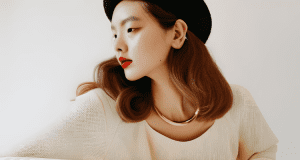The 1950s and 1960s were known as the “Golden Era of 50s and 60s Fashion,” and it was a time of significant cultural and historical transformation. Due to the rise of Hollywood glitz and celebrity culture in the 1950s, there was a movement towards more refined and fitting clothing. Once the 1960s dawned, the mod movement and unisex clothes made a major shift in the fashion industry towards rebellion and youthfulness. Several designers and businesses continue to be inspired by this era’s famous looks, demonstrating how influential it has been on fashion even now. This article will explore the historical background, storied fashion movements, and lasting effects of the 1950s and 1960s fashion era.
I. Historical Context
The historical and cultural developments of the 50s and 60s fashion had a significant impact on the fashion industry. After World War II, America and Europe enjoyed wealth, which fueled the demand for elegance and refinement in clothing throughout the 1950s. Fashion was significantly influenced by both the Cold War and the Korean War, which saw the emergence of military-inspired trends like trench coats and pea coats.

Together with political developments, Hollywood significantly influenced the era’s fashion trends. Hollywood glitz grew increasingly popular as a result of celebrity culture, and actresses like Marilyn Monroe, Audrey Hepburn, and Elizabeth Taylor were fashion idols who influenced trends both on and off the screen.
A cultural revolution was underway as the 1960s got underway, with the Civil Rights Movement and the Counterculture movement questioning established morals and social mores. The younger generation rejected the traditional trends of the past in favor of more daring and unorthodox styles, which had a significant effect on fashion. The hippie movement introduced a bohemian style with its flowing textiles, fringe, and natural features, while the mod movement evolved with its emphasis on youth, simplicity, and vibrant colors.
Ultimately, the Golden Period of the 50s and 60s fashion historical setting had a huge impact on the styles and trends of the day and still has an impact on fashion now.
II. Women’s Fashion in the 1950s
After the practical and utilitarian fashions of the wartime era, the 1950s saw a return to femininity and grace in women’s fashion. Designer Christian Dior made the hourglass shape, with a tight waist and long skirt, popular and gave it the name “New Look.” The use of expensive materials like silk, satin, and taffeta contributed to the period’s overall glitz.
The “poodle skirt,” a long skirt often made of felt with a poodle or other appliqué sewed onto it, was one classic design from this era. Sheath dresses, which were fitting and frequently had a boat neckline and three-quarter-length sleeves, were another well-liked design. Gloves, pearls, and purses were the finishing touches on the elegant ensemble.
With their emphasis on simplicity and elegance, designers like Coco Chanel and Hubert de Givenchy had a big influence on women’s fashion throughout this time. With its boxy jacket and narrow skirt, Chanel’s trademark suit became a mainstay of the time. At the same time, Givenchy’s creations, worn by celebrities like Audrey Hepburn, highlighted a classic and timeless look.
In general, 1950s women’s fashion emphasized femininity, elegance, and luxury, and it continues to serve as a source of inspiration for contemporary designers.
III. Men’s Fashion in the 1950s
Men’s fashion in the 1950s was characterized by a shift towards a more refined and tailored aesthetic, as well as the influence of Hollywood and rock and roll culture. The “Ivy League” look emerged, with its emphasis on clean lines, classic pieces, and preppy details such as button-down collars and knit ties. Suits were typically double-breasted and featured wide lapels, while trousers were high-waisted and pleated.
Another popular style from this era was the “Teddy Boy” look, which originated in Britain and was inspired by the Edwardian era. This style featured a longer jacket, often in a velvet or brocade fabric, paired with slim trousers and polished shoes. The “greaser” style, popularized by iconic figures such as James Dean and Marlon Brando, also had an influence on men’s fashion during this time period, with its leather jackets and denim jeans.
Accessories such as fedoras, pocket squares, and suspenders completed the polished look of the era. Overall, men’s fashion in the 50s and 60s fashion emphasized sophistication and refinement, with a range of styles influenced by both traditional and subversive elements of culture.

IV. Women’s Fashion in the 1960s
In the 1960s, women’s fashion underwent a significant transformation from the decade’s elegance and femininity as the young culture of the time welcomed more daring and unorthodox looks. With its emphasis on simplicity, straight lines, and striking geometric patterns, the mod movement helped to define the era’s dominant style.
The miniskirt, which first appeared in the middle of the 1960s and later came to represent the time’s rebellion against conventional norms, is one memorable fashion item from this era. The tiny skirt was frequently worn with a straightforward shift dress or shirt and tights or knee-high boots. The A-line dress, which had a small top and a flared skirt, and the babydoll dress, which was short, were two more popular designs from the time.
Accessories were quite important in 1960s women’s fashion, in addition to bright prints and short hemlines. Go-go boots, chunky jewelry, and statement sunglasses were all in style, while bright eyeshadow and dramatic eyeliner were among the most popular beauty looks.
Overall, 50s and 60s fashion placed an emphasis on youth, rebellion, and a break from conventional gender norms, and it continues to serve as a source of inspiration for contemporary designers.
V. Men’s Fashion in the 1960s
With a focus on striking patterns, vivid colors, and unusual shapes, the mod movement and the counterculture of the time had a significant effect on men’s design in the 1960s. As men embraced the freedom and rebellion of the time, the classic tailored appearance of the 1950s was replaced with more casual designs.
The Nehru jacket, which had a Mandarin collar and a straight, narrow shape, was one classic design from this era. This jacket was a favorite of artists and other cultural figures, and it was frequently worn with slim-fitting pants or denim. The “peacock revolution” was another well-liked fashion trend that placed an emphasis on bright, flamboyant attire like paisley shirts, broad lapels, and bell-bottom pants.
The popularity of long hair and beards throughout the 1960s led to an increase in hats and sunglasses, which had a big impact on men’s fashion as well. The “mop-top” hairdo popularised by the Beatles became a representation of the time’s defiance against established norms, while fedoras and aviator sunglasses gave even the most casual of looks a sense of class.
In general, the 50s and 60s fashion menswear emphasized individualism, revolt, and a break from conventional gender norms, and it still serves as an inspiration to designers and fashion aficionados today.
VI. Influence on Fashion Today
Today’s fashion is still greatly influenced by the styles of the 1950s and 1960s. In order to maintain the looks current and in style, designers frequently draw inspiration from the famous designs and shapes of previous decades.
The 1950s hourglass form is still a popular choice for women’s clothing, with designers developing modernized copies of the vintage “New Look” garment. Bold patterns and vivid colors are making a comeback on the runway and in streetwear, leaving their mark on the mod style of the 1960s.
The Ivy League look’s crisp lines and preppy accents have become an eternal classic in men’s fashion, Designers wanting to push the limits of conventional men’s fashion continue to be inspired by the brash and outlandish looks of the counterculture era.
The 1950s pearl necklaces and gloves offer a touch of refinement to modern outfits, while the 1960s fedoras and sunglasses add a nod to casual sophistication. Accessories from both decades have also endured in popularity.
Overall, the focus on individualism, revolt, and self-expression in the 1950s and 1960s fashion still resonates with contemporary audiences, serving as a source of inspiration and influence for designers and fashion fans alike.
VII. Conclusion
The fashion of the 50s and 60s fashion was a reflection of the cultural shifts and societal changes of the era, with both periods leaving an indelible mark on fashion history. The refined elegance of the 1950s and the bold rebellion of the 1960s continue to inspire designers and fashion enthusiasts today, with their timeless styles and iconic silhouettes remaining relevant and popular.
From the hourglass silhouette and the New Look dress to the Nehru jacket and the miniskirt, the fashion of these eras has had a lasting impact on contemporary fashion. The influence of these styles can be seen in both high-end fashion and streetwear, as designers continue to look to the past for inspiration and update the looks for modern audiences.
Ultimately, the fashion of the 50s and 60s fashion serves as a reminder of the power of fashion to reflect and shape cultural trends and values and remains an enduring legacy in the world of style and design.
